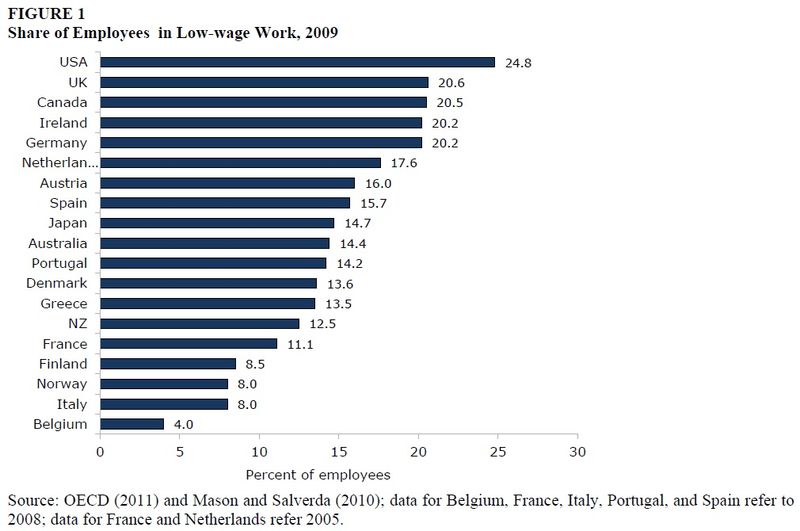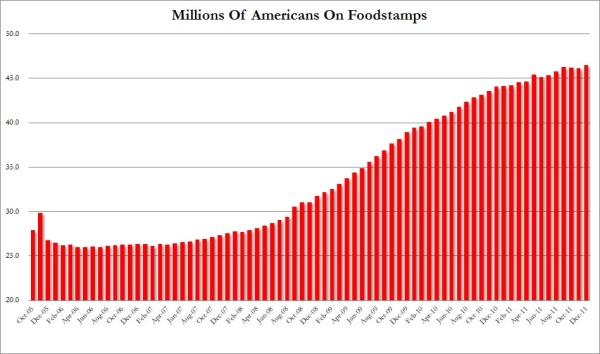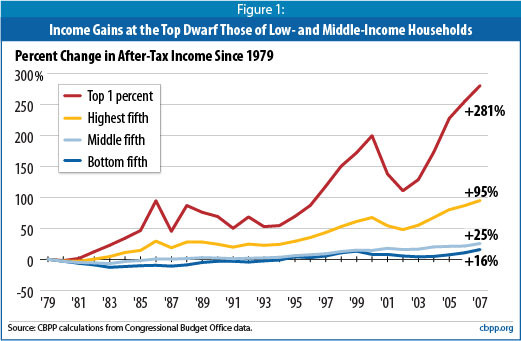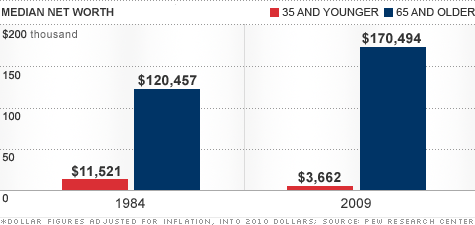The US has one of the highest number of employees working in low wage jobs of high paying industrialized nations. 1 out of 4 Americans employed work in jobs that pay less than $10 per hour.
Number of Americans in low wage jobs
An interesting chart below was presented by economist Tim Taylor. The chart is illuminating:

Source: Conversable Economist
Taking a look at some of the industrialized nations with higher incomes in the world and the US has one of the largest numbers of those employed working in low wage fields. It is helpful to define what low wage work is; low wage work is employment positions that pay less than $10 an hour. It is an interesting trend that has continued for well over three decades. A large portion of Americans are working in lower wage work (assuming they have work). The $25,000 per capita average of income doesn’t seem so farfetched when one out of four employed Americans find their source of employment to be in the low wage segment of the economy.
An interesting observation is made by Tim Taylor:
“The issue here can be summed up with this question: If someone in the U.S. economy is a law-abiding citizen who works full-time for a period of years, can they earn a level of wages that let them afford a slice of middle-class standard of living? If you are earning $10/hour and working 2,000 hours per year, your annual earnings of $20,000 would put you below the poverty line of $22,891 for a single parent with three children.”This fact also highlights the large silent numbers that we see with Americans on food stamps. Some are part of the working poor. Over 46,000,000 Americans are receiving some form of food assistance today:

Source: Zero Hedge
You can see how quickly things went up from 25 million or so before the recession hit to 46 million today. Is this really a recovery? Not if we define a recovery as paving the road to a middle class lifestyle for many Americans. Much of this path has been paved over even in the last couple of decades. The 2000s appeared on the surface to usher in prosperity for Americans but in reality, wages were stagnant and all the outward signs of spending came from diving deep into unsustainable levels of debt. Now that we are dealing with the aftermath of deleveraging people are realizing a growing divide in our country that is becoming more prominent and hard to ignore.
The growing divide
Some parts of the country have done exceptionally well in the last few decades:

Most of the gains have come to the top one and five percent of the nation. While those in the middle fifth of income saw income rise by 25 percent since the 1970s those in the top 1 percent have seen a stunning 281 percent average jump. Those on the low income segment have done much worse seeing only a 16 percent rise in income.
These are issues we need to explore since it appears the middle class is disappearing in our country. The stock market may be up over 100 percent since the low days of 2009 but most Americans have very little invested so it really hasn’t changed their lives:

Most Americans, especially the young have little invested in anything. Part of this comes from the massive number working in low wage fields. When examining employment trends we find that some of the top number of jobs for the future will come from lower wage sectors. How much as a nation do we value having a strong and vibrant middle class? You can’t call it a middle class when a large portion of employees are at the bottom.